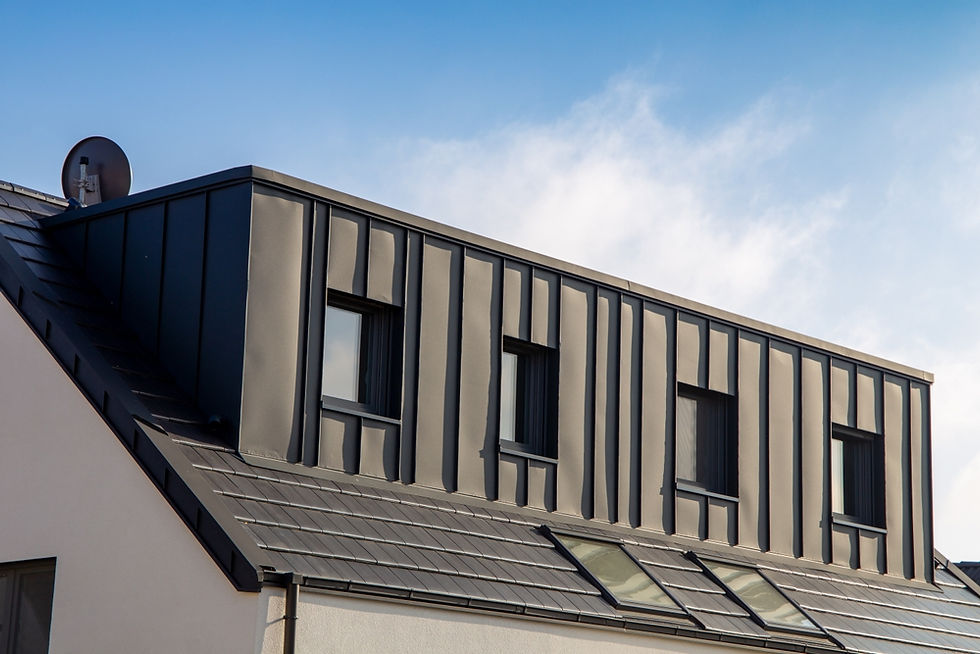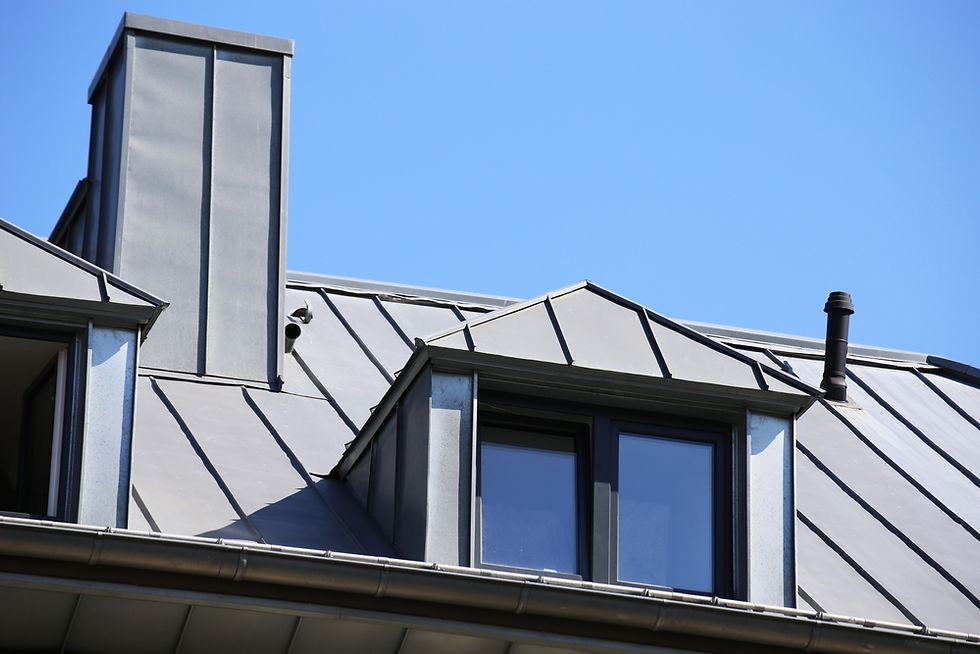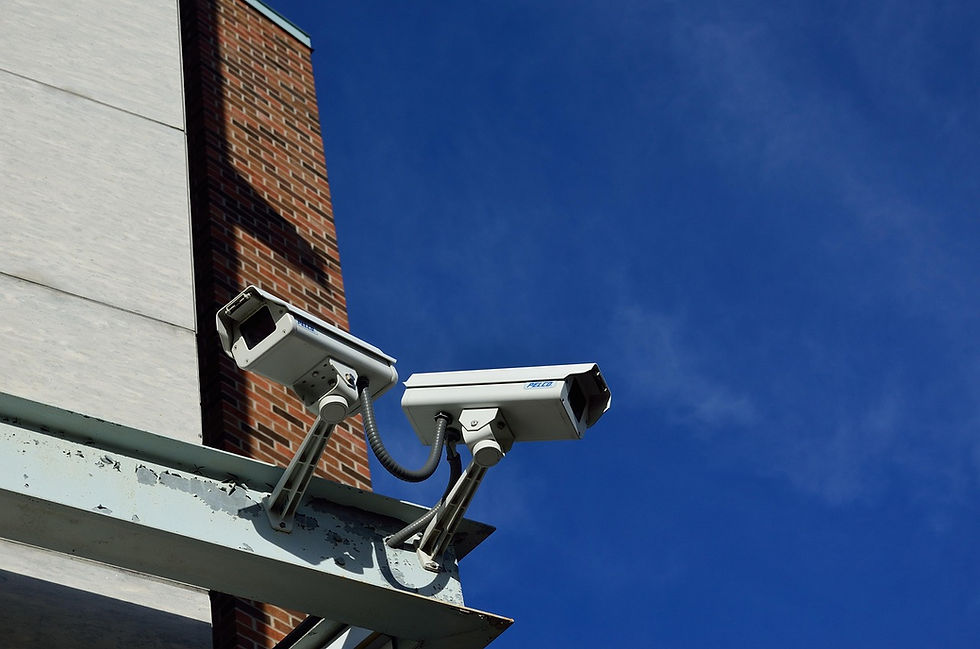Best Practices for Maintaining Standing Seam Cladding
- annawrench1315
- Mar 17
- 7 min read
Have you ever admired a beautifully sleek metal rooftop and wondered how it keeps that polished look year after year? Are you curious about how standing seam cladding can remain so durable, especially across Australia’s unpredictable climate? If these questions have crossed your mind, you’re in the right place.
Standing seam cladding often stands out for its modern appeal and robust resilience, but there’s a bit more to its upkeep than just a quick rinse with a hose.
Whether you’re tackling the job yourself or hiring seasoned professionals, you’ll find everything you need to make sure your cladding remains in peak condition. By the time you finish reading, you’ll have a thorough understanding of how to clean, repair, and protect this impressive metal cladding system. You’ll also discover ways to budget and plan for ongoing maintenance, so you’re never caught off guard by unexpected costs.
Understanding Standing Seam Cladding
What Is Standing Seam Cladding?
Standing seam cladding is a type of metal cladding that features raised seams or vertical legs, which lock together for a tight, weather-resistant fit. These seams are usually spaced uniformly, giving roofs and walls a modern, streamlined look. This distinct design not only adds visual flair but also helps guide water and debris away from the structure.
You might most commonly see this cladding installed on commercial buildings, but it’s rapidly growing in popularity among homeowners too. People appreciate its durability and classic appeal, plus the fact that it can stand the test of time even in tough climates. In Australian conditions, with everything from scorching sun to heavy downpours, standing seam cladding can offer a robust shield for your property.

Benefits of Using Standing Seam Cladding
A key appeal of standing seam cladding is its high level of weather protection. The interlocking seams form a barrier that’s tough for water or wind to penetrate. When properly installed, these panels can also help improve energy efficiency by reflecting heat rather than absorbing it.
Not to mention, the clean, linear appearance of metal seams can elevate your home’s aesthetics. Because standing seam cladding is typically made from aluminium, steel, or copper, it delivers a wide-ranging palette of finishes and tones. This means you can match or complement existing design elements without compromising on strength.
Key Differences from Other Metal Cladding Options
So how does standing seam differ from other metal cladding types? The biggest difference is in the locking mechanism. Corrugated metal sheets, for instance, rely on overlapping panels, whereas standing seam uses raised seams that lock into place for a tighter seal. This design often yields fewer maintenance concerns in the long run.
Additionally, many property owners find standing seam cladding to be more visually appealing than alternative choices. While tastes vary, the crisp lines and uniform pattern of standing seam panels can add a refined touch to any building. Plus, the durability factor makes it a serious contender against older or less advanced metal cladding systems.
Essential Maintenance Basics
How Often Should Standing Seam Cladding Be Maintained?
When it comes to maintenance, frequency matters. Most experts suggest scheduling a thorough inspection at least once a year. For buildings in coastal regions or places with harsh weather patterns, you might consider biannual checks. The idea is to spot minor problems before they turn into major headaches.
Keep in mind that regular maintenance goes beyond just a visual glance of the surface. It can include cleaning away dirt, removing leaves from gutters, and tightening any loose fasteners. These little steps add up to a protective routine that prolongs your cladding’s life and helps you avoid costly repairs later on.
Common Mistakes Property Owners Make
One frequent oversight is ignoring the roof or walls until an obvious problem appears. Small scratches or tiny leaks might look harmless, but they can lead to issues like corrosion or mould down the track. Another mistake is using the wrong cleaning products, often harsh chemicals that eat away at the metal’s protective coatings.
Some people also forget about ventilation and insulation. Even the best metal system can fail if trapped moisture or indoor humidity keeps condensing on the panels. By keeping an eye on these subtle factors, you can circumvent many of the most common issues homeowners face with metal cladding.
Regular Cleaning and Inspection
Why Is Regular Cleaning Important for Standing Seam Cladding?
Regular cleaning is vital because dirt, debris, and organic matter can trap moisture against the metal surface. When water lingers in crevices, it can encourage corrosion or algae growth. Additionally, a clean surface makes it much easier to spot any early damage, such as hairline cracks, minor dents, or loose fasteners.
Another bonus of consistent cleaning is that it keeps your property looking sharp. Standing seam cladding has a sleek design that can really shine when it’s free of grime. A quick routine can improve not only the cladding’s health but also your home’s overall curb appeal.
Recommended Cleaning Techniques and Products
When cleaning standing seam cladding, always opt for mild solutions over harsh chemicals. A gentle mix of water and a pH-neutral detergent typically does the trick for surface grime. Steer clear of abrasive brushes or scouring pads that can scratch the finish.
For stubborn dirt or grease, you can use a soft cloth with diluted household detergent. Rinse thoroughly afterwards to avoid leaving any soapy film. It’s also wise to hose down the panels from top to bottom to guide grime away rather than pushing it into seams.
Scheduling Inspections and Checkpoints
Set up a checklist to guide your inspections. This might include looking for rust spots, checking the tightness of seams, and observing the condition of flashings around edges or penetrations. Taking a methodical approach ensures that no corner goes unnoticed.
Placing sections of your property on a rotational cleaning schedule can help too. For example, you might inspect the north side of your roof one month and the southern facade a few months later. This way, you spread out the tasks and avoid letting the entire structure fall into disrepair at once.
Tools and Safety Measures for DIY Maintenance
If you prefer a do-it-yourself approach, consider investing in safety equipment like secure ladders, non-slip shoes, and harnesses if you’ll be working at height. It’s also important to clear any nearby power lines or branches before starting. Keep a buddy system in mind having someone spot you while you work can be a big help in preventing accidents.
In terms of tools, a soft-bristle broom or brush can be handy for sweeping away loose debris. For stubborn areas, a low-pressure washer on a gentle setting may offer a quick solution. However, always read the manufacturer’s instructions for your specific cladding material before using any pressure equipment.

Extended Longevity and Performance
Protective Coatings and Finishes
Protective coatings can significantly improve the durability of your standing seam cladding. Many manufacturers offer factory-applied finishes designed to tackle corrosion, UV damage, and even algae growth. These coatings can add years to your cladding’s service life while keeping it looking fresh.
It’s also possible to add a clear protective layer after installation. This might be recommended if your home faces particularly aggressive conditions, like waterfront properties that suffer from salt air. Before applying any new finish, verify compatibility with existing coatings to avoid adhesion problems.
Should You Repaint or Replace?
Eventually, you may come across wear and tear that demands more than a spot repair. Repainting is a cost-effective way to restore faded or peeling panels. It can also help seal minor trouble spots and provide an extra layer of protection. However, if the underlying metal is severely corroded or warped, replacement might be the more practical route.
When weighing up repainting versus replacement, consider how extensive the damage is and how old your cladding has become. A fresh coat of paint can rejuvenate panels that are structurally sound but just need a cosmetic boost. If you’re not sure, consulting a professional can clarify which path offers the highest value.
Insulation, Weatherproofing, and Energy Efficiency
Standing seam cladding can improve your home’s thermal performance by reflecting heat. Yet you can amplify this benefit further with proper insulation beneath your metal panels. Effective insulation not only helps regulate indoor temperatures but can also reduce the risk of condensation, which can degrade metal over time.
Weatherproofing measures, like flashing around skylights or vents, also play a pivotal role in extending cladding life. When everything is sealed well, your building will be more energy-efficient. This can lower your utility bills and create a more comfortable living environment all while protecting the integrity of your standing seam cladding.
Cost Considerations and Planning
Budgeting for Routine and Unexpected Maintenance
Budgeting for cladding maintenance isn’t just about planning for routine inspections. It’s wise to set aside a small fund for unexpected issues like storm damage or corrosion repairs. Think of it as an investment in your property’s long-term value.
Typical annual maintenance costs might include cleaning supplies, inspection services, and minor fixes. Keep in mind that certain areas with challenging climates may demand higher expenditures. Planning ahead ensures you won’t be caught off guard by bigger bills when it’s time for a more comprehensive repair.
Sourcing Sustainable and Cost-Effective Materials
When scheduling maintenance or replacements, look for sustainable or recycled materials if possible. Many metal roofs can be produced from recycled content, reducing your environmental impact. Plus, long-running durability means you’ll replace less often, which is better for both your wallet and the planet.
You can also compare suppliers to find cost-effective materials that don’t compromise on quality. Some suppliers may offer bulk purchase discounts if you’re sourcing cladding for larger residential or commercial projects. Negotiating wisely can help you strike a balance between performance and budget constraints.
Negotiating with Suppliers and Contractors
Don’t be shy about discussing prices with suppliers. Contractors often have some flexibility in their quotes, especially if you’re open to scheduling the work during off-peak periods. Obtaining multiple quotes allows you to compare not just price, but also the scope of work and any extra services they may include.
Look for contractors who specialise in metal cladding. Their expertise in working with standing seam products can help you avoid costly mistakes and ensure a smooth, stress-free experience. In addition, building a good rapport with your contractor can lead to valuable advice on upcoming trends and maintenance best practices.
Conclusion
So, what’s the bottom line? Standing seam cladding can be both a stylish and reliable way to protect your property, as long as you give it the care it deserves. By keeping up with regular cleanings, inspections, and minor fixes, you can extend the life of your cladding and avoid surprises when challenging weather hits. Along the way, remember to respect Australia’s unique climate factors and any local rules that might apply to your region.
If you’re weighing whether it’s time to repaint, add protective coatings, or replace entire panels, think about the cost versus the long-term benefit. A bit of attention now can pay off significantly in the future. By planning ahead and setting aside a budget for both routine and unforeseen issues, you can always feel prepared.








Comments